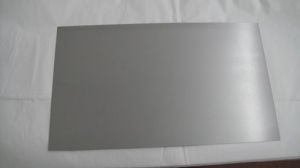- English
- French
- German
- Portuguese
- Spanish
- Russian
- Japanese
- Korean
- Arabic
- Greek
- German
- Turkish
- Italian
- Danish
- Romanian
- Indonesian
- Czech
- Afrikaans
- Swedish
- Polish
- Basque
- Catalan
- Esperanto
- Hindi
- Lao
- Albanian
- Amharic
- Armenian
- Azerbaijani
- Belarusian
- Bengali
- Bosnian
- Bulgarian
- Cebuano
- Chichewa
- Corsican
- Croatian
- Dutch
- Estonian
- Filipino
- Finnish
- Frisian
- Galician
- Georgian
- Gujarati
- Haitian
- Hausa
- Hawaiian
- Hebrew
- Hmong
- Hungarian
- Icelandic
- Igbo
- Javanese
- Kannada
- Kazakh
- Khmer
- Kurdish
- Kyrgyz
- Latin
- Latvian
- Lithuanian
- Luxembou..
- Macedonian
- Malagasy
- Malay
- Malayalam
- Maltese
- Maori
- Marathi
- Mongolian
- Burmese
- Nepali
- Norwegian
- Pashto
- Persian
- Punjabi
- Serbian
- Sesotho
- Sinhala
- Slovak
- Slovenian
- Somali
- Samoan
- Scots Gaelic
- Shona
- Sindhi
- Sundanese
- Swahili
- Tajik
- Tamil
- Telugu
- Thai
- Ukrainian
- Urdu
- Uzbek
- Vietnamese
- Welsh
- Xhosa
- Yiddish
- Yoruba
- Zulu
Do You Know The Cutting And Application Of Tantalum Plate?
2024-01-05 18:05:21
Do You Know The Cutting And Application Of Tantalum Plate?
Nov 19, 2020
The melting point of tantalum is 2980°C, second only to tungsten (3380C) among commonly used refractory metals, and its density is 16.67 g/cm3. In the annealed state, tantalum has good plasticity and is relatively stable at high temperatures, which can absorb and retain gas. Tantalum is acid resistant and is a biocompatible material.

Tantalum is widely used in electronics, chemical, medical and other industries. At the same time, tantalum is also an indispensable material for making hard alloys. Tantalum has a high melting point and high density, good plasticity in the annealed state, and stable performance at high temperatures. The annealed tantalum material is soft and tough, and severe adhesion will occur during cutting, causing bonding wear of the tool. Especially when the cutting speed is lower than 20m/min, sticking and tearing are more serious. When the cutting speed is higher than 40m/min, the tearing phenomenon is greatly reduced. When cutting, the tool is required to be as sharp as possible, and the cutting speed should not be too low. --Generally, cemented carbide is used as the tool material, and the commonly used ones are YG8, YW2, etc. With larger rake angle and entering angle, the tool geometry parameters are: y0=35o~45o, a0=5o~8o, Kr=90o, K'r=5o, y01=- -2o~ 2o, by=0.1~0.3 mm, re=0.2~0.5mm, the front and rear surface roughness Ra<0.16~0.32μm, to reduce friction and sticking.
The selection of cutting amount is as follows: vc= +30~70m/min, ap=5~8mm, f=0.2~0.4mm/r when rough turning; vc=50~80m/min, ap≤ when finishing and semi-finishing turning 1.5mm, f=0.1~0.3mm/r. When cutting, use a cutting fluid that has both cooling and lubrication effects, and the flow rate should be sufficient.
YOU MAY LIKE